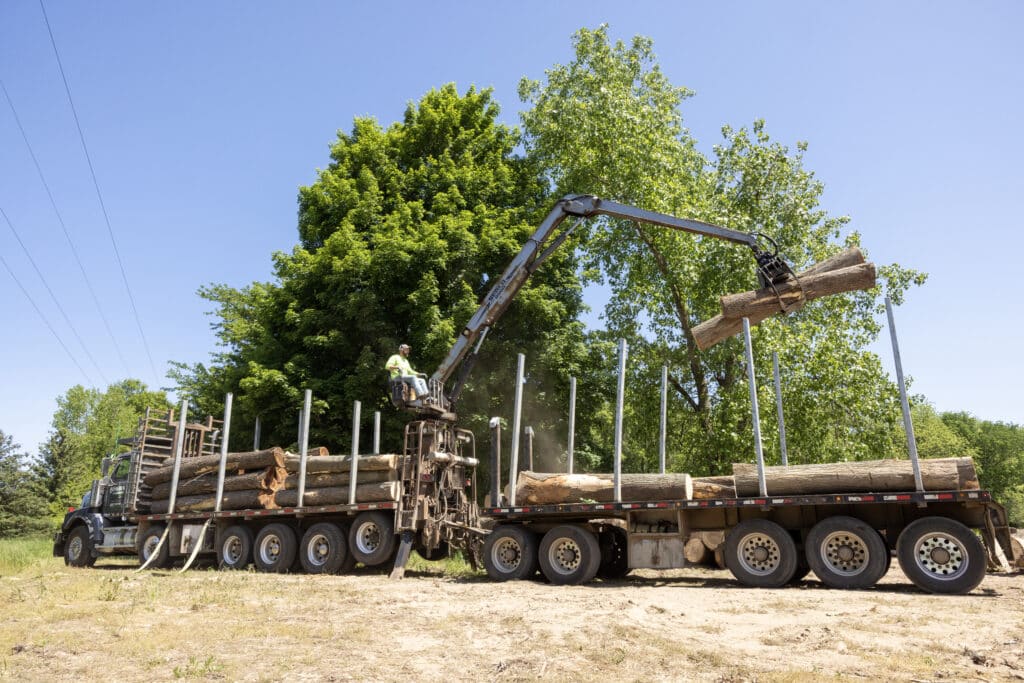When it comes to timber harvesting, it’s easy to only think about your trees. However, you should also consider the effects it can have on your soil. The heavy machinery used in logging can compact your soil, affecting forest health and slowing regeneration.
In this blog, we’ll explore how logging operations contribute to soil compaction and share strategies to minimize soil damage, promoting sustainable forestry practices.
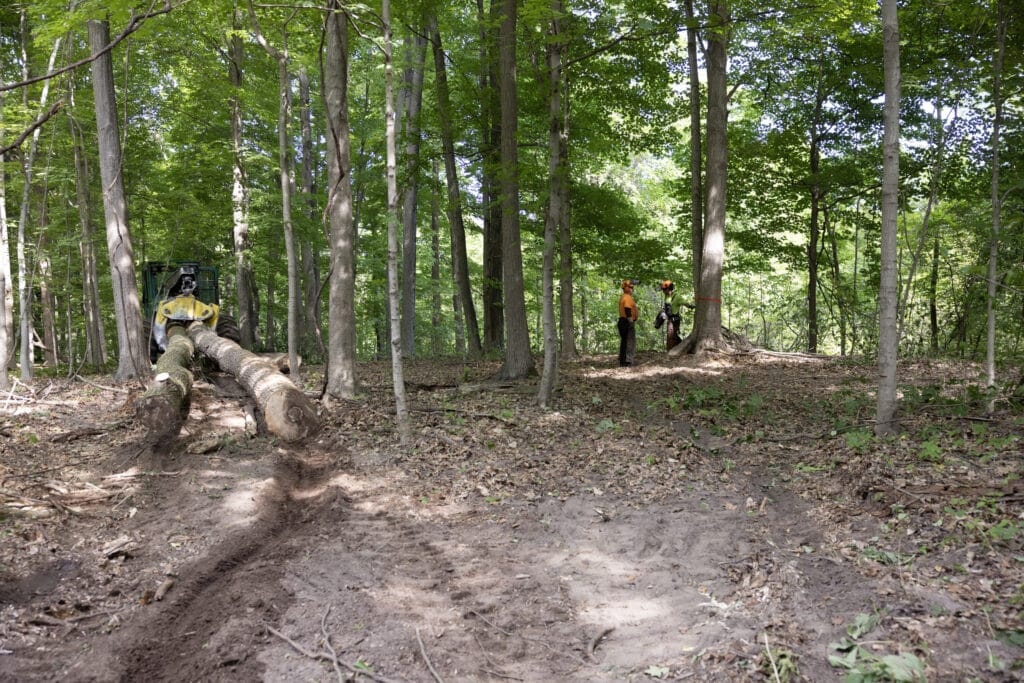
Factors That Can Affect Soil Compaction
Soil compaction happens when soil particles are pressed tightly together, reducing the spaces between them and preventing air and water from passing through. This makes it harder for roots to grow and water to drain, negatively affecting forest regrowth after logging. The type of soil, the machinery used, how many times machines drive over the same area, the time of year, and whether the land is flat or sloped all play a role in how much the soil gets compacted during a timber harvest.
Soil Texture and Structure
Soil texture refers to the mix of sand, silt, and clay in the soil. For example, sandy soils are more resistant to compaction, while soils that contain a lot of silt or loam are more vulnerable. When logging takes place on these softer soils, they can be compacted more easily.
Soil structure describes how these particles are grouped together. When the soil has a good structure, with plenty of organic matter (like dead plant material), it can better resist the pressure from logging equipment. This structure helps prevent soil particles from being tightly packed together, allowing air, water, and plant roots to move freely.
Harvesting Equipment
While heavier machines exert more pressure on the soil, wide tracks or tires help distribute the weight, reducing damage. In contrast, narrow wheels or heavier loads compact the soil more.
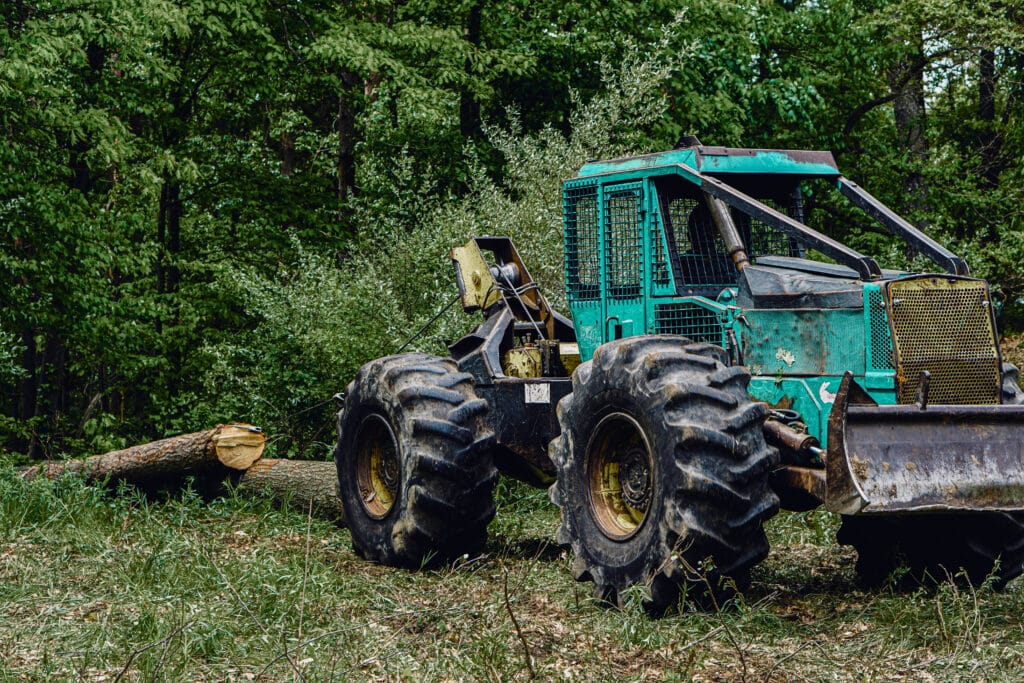
Number of Passes
Each time a logging machine drives over an area (called a machine cycle), it compacts the soil a little more. The first few passes cause the most compaction—up to 50%—while after 10 passes, the compaction increases at a slower rate. This is why it’s important to make sure your woodlot is accessible and minimize how often machines drive over the same ground to reduce long-term damage.
Is your woodlot easily accessible? The location of your standing timber and its accessibility may be factors in the value of your timber. Get an appraisal to both assess your property’s accessibility and see how much your timber is worth.
Time of Year
The season can significantly impact the amount of soil compaction that occurs. Soil is more likely to compact when it’s moist, which is why logging operations are often best done in the late fall or winter. Frozen or dry soil can handle the weight of logging equipment better because it’s less prone to compaction. Wet soil, on the other hand, acts like a lubricant, making it easier for soil particles to shift and pack together tightly.
Slopes & Hillsides
The steeper the slope, the higher the risk of soil compaction. On steep hillsides, machine wheels often slip, which forces the soil particles closer together, increasing compaction. On flat land, machines can spread their weight more evenly, but on slopes, the pressure is focused on certain areas, especially on the rear axles of machines when they’re driving uphill. For slopes over 30%, special techniques like cable logging are often used to avoid damaging the soil or causing erosion.
Soil Compaction Effects from Logging
Soil compaction from logging machinery can negatively impact plant growth by reducing the availability of water, air, and nutrients, and increasing the risk of erosion and runoff. Because compacted soil has fewer pore spaces, it becomes difficult for roots to penetrate the soil and reduces water infiltration, which can lead to waterlogging or drought conditions. However, in some cases, mild compaction can help coarse-textured soils retain water.
Partnering with experienced, sustainable professionals like Buskirk Lumber is key to ensuring the long-term health of your forest. With over 100 years of experience in sustainable forest management, Buskirk Lumber understands how to minimize environmental impacts while maximizing the value of your timber. Our team knows how to implement strategies that protect soil integrity and promote forest regeneration, ensuring that both your land and its resources thrive for years to come. Learn more about forest management at Buskirk Lumber.
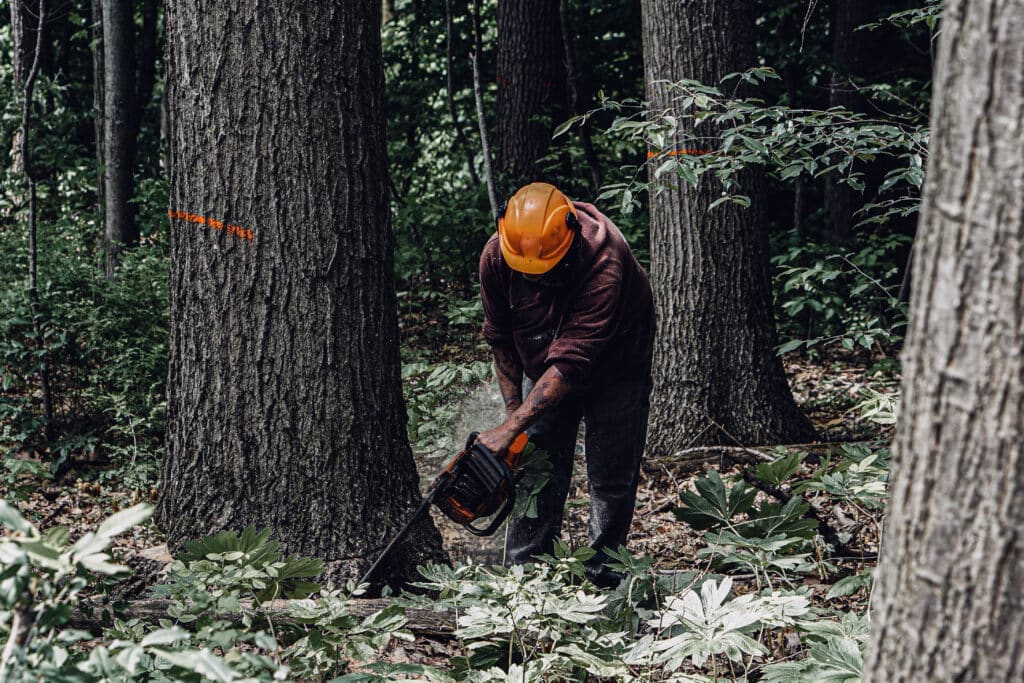
Management Strategies
According to the US Forest Service, an increase in soil bulk density beyond 15% is incredibly harmful to forest sustainability. This is why soil compaction prevention is essential during logging operations. Some effective strategies include choosing the right equipment, managing skid trails, avoiding wet areas, harvesting at the right time, and using techniques like slash mats to reduce soil compaction.
Selecting Suitable Equipment
Choosing the right equipment is an important step in reducing the harmful effects of logging. Lighter machines with wider tires or tracks spread their weight over a larger area, reducing soil compaction. On steep slopes, cable logging is a good option because it causes less soil damage than ground-based systems—only about 1% compared to up to 11% with traditional methods.
Skid Trail Gradient
Skid trails are paths used to transport logs. To limit soil compaction, it’s best to use designated trails and keep steep slopes (anything over 20%) to a minimum. If necessary, limit uphill passes and stabilize the soil using techniques like mulching and seeding.
Avoid Waterlogged Areas
Wet soils are especially prone to compaction, so it’s important to avoid logging in swampy areas or waterlogged sites. If logging in these areas is necessary, using wider tires or tracks can help reduce ground pressure. Shovel logging, where felled trees are placed on the ground to create a stable path for skidders, is commonly used in bottomland hardwood forests to protect the wet soil.
Harvesting at the Right Time
The winter months are one of the best times for harvesting sustainably while reducing environmental impact. Not only does a winter harvest align with your woodlot’s natural processes, but it also helps to minimize effects on the soil and vegetation of your property. Learn more about the benefits of harvesting in the winter.
Slash and Brush Mats
Laying down branches and tree tops (slash) on skid trails can significantly reduce soil compaction by spreading the weight of the machinery. The more slash applied, the better the protection. Heavier layers of slash or brush (about 8 pounds per square foot) are more effective in protecting the soil, though some compaction still occurs.
Sustainable Harvesting with Buskirk Lumber
When you work with Buskirk Lumber, we’ll come to your woodlot and help develop a harvest plan that’s best for you and your property. First, we’ll let you know how many trees we are interested in and the price we can pay. Then, we’ll put together a sustainable plan of action that prioritizes both the health of your woodlot and your personal goals.
Get help creating a forest management plan that’s customized for your woodlot.
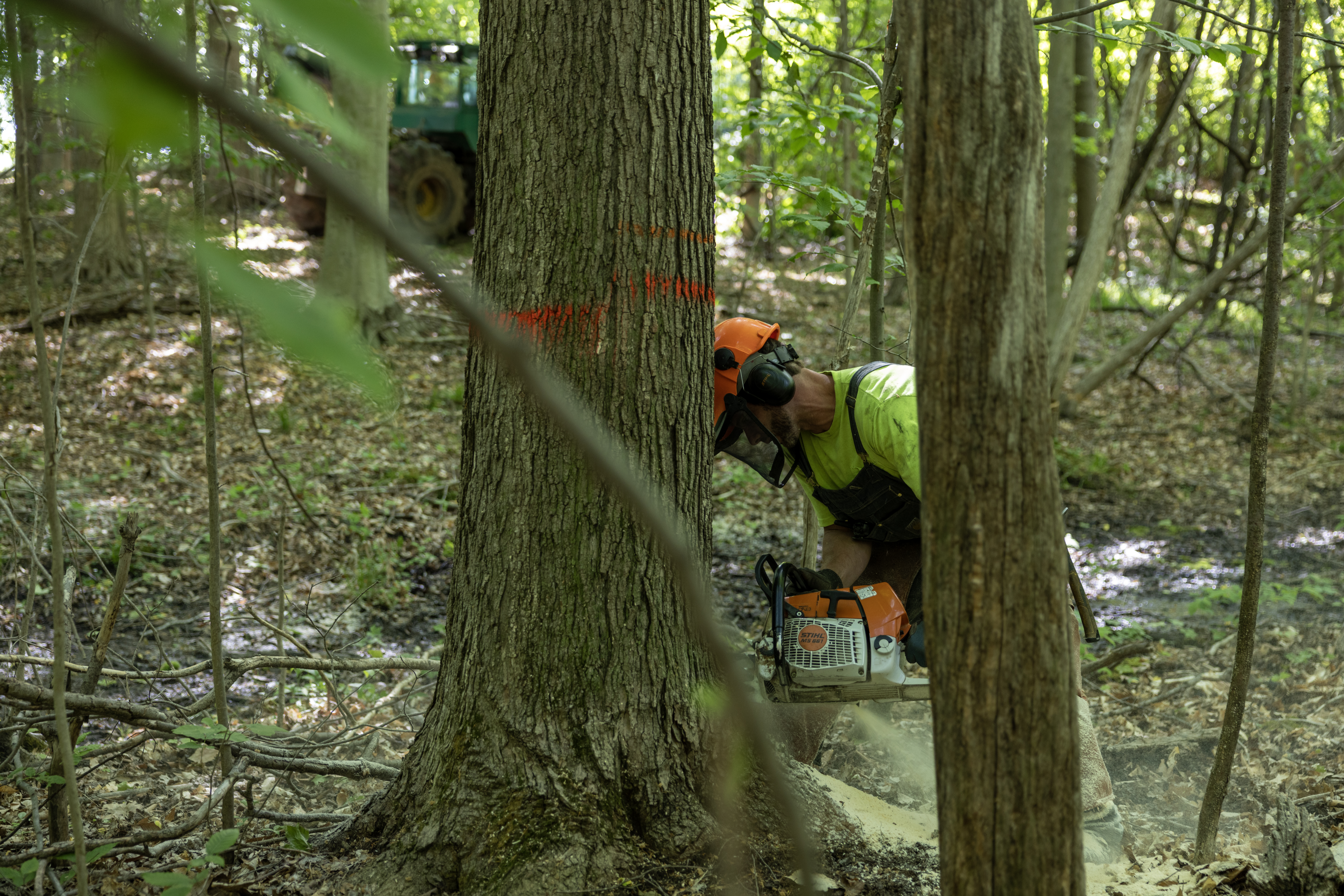
Buskirk Lumber: Sustainably Harvesting Michigan’s Hardwoods Since 1920
Located in Freeport, Michigan, Buskirk Lumber has been a trusted partner in sustainable forest management for over 100 years. As licensed and bonded timber buyers, we provide the expertise you need to manage your woodlot in a way that promotes forest health and profitability for you as a landowner. You can always trust us to be professional, transparent, and treat your property as if it were our own.
With a full-service sawmill, harvesting crew, and dedicated timber-hauling trucking division based in Freeport, MI, we serve Michigan, Indiana, and Ohio with timber harvesting services. Contact us today for a timber appraisal and discover the value of your standing timber.
